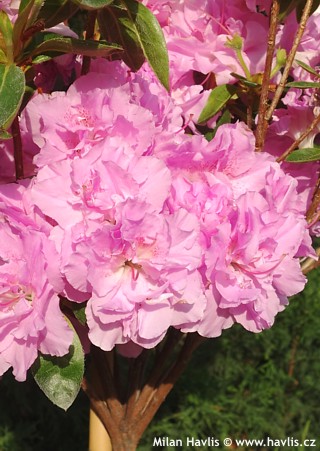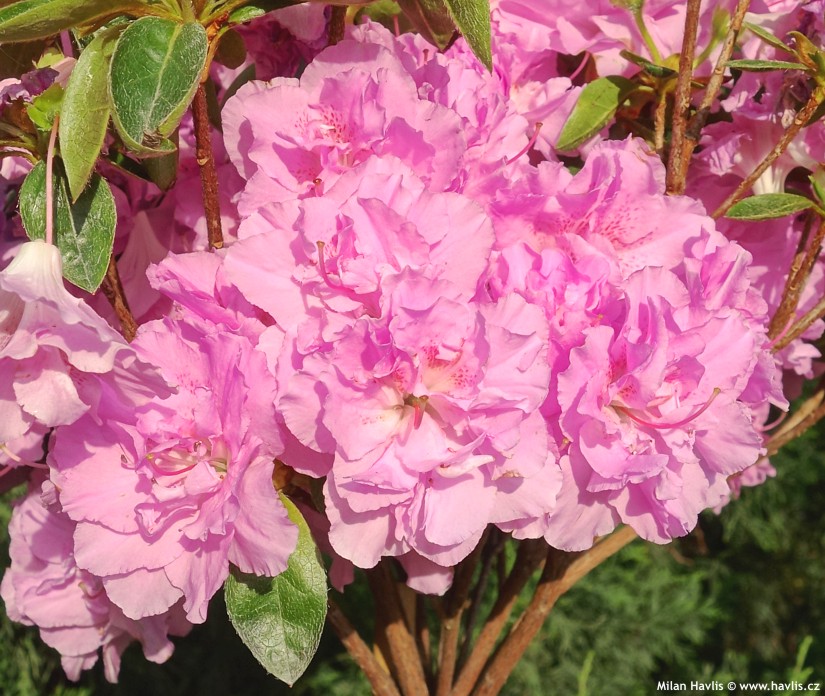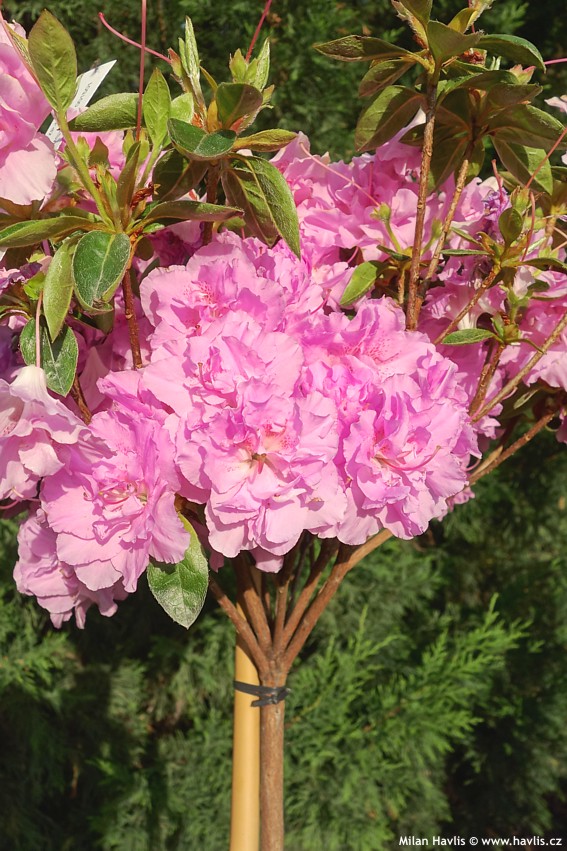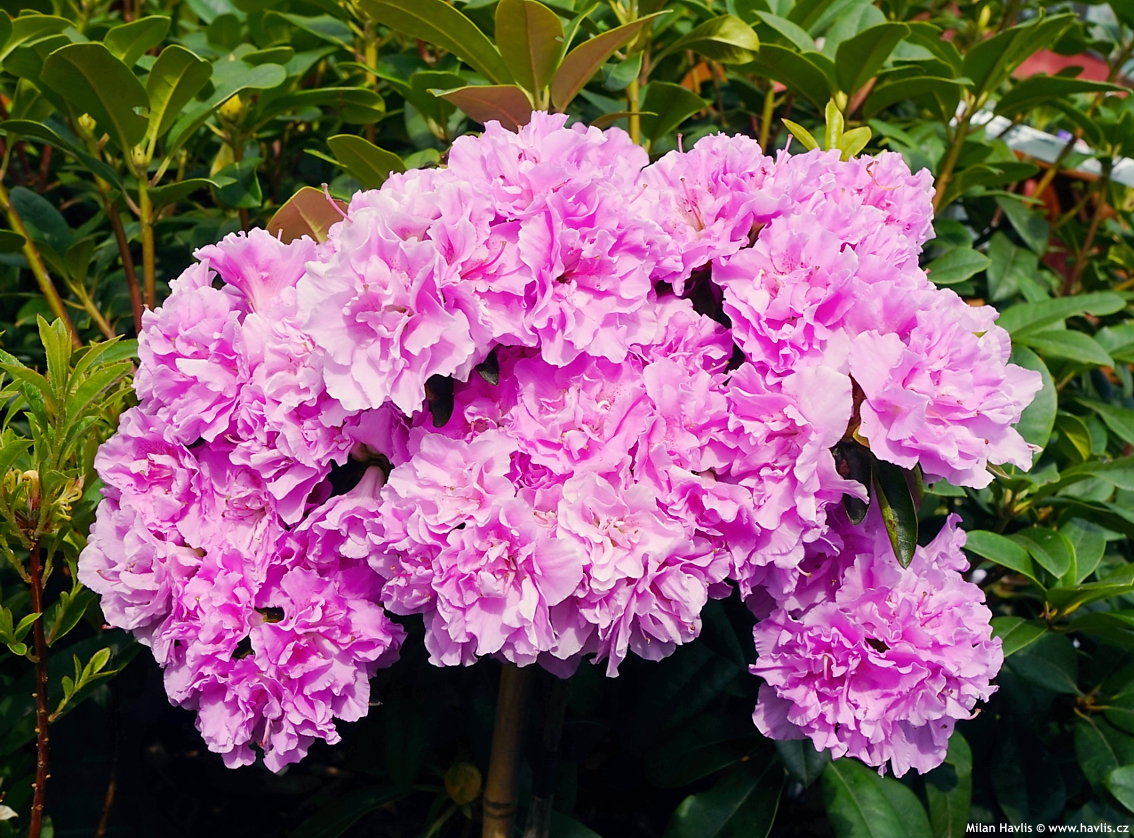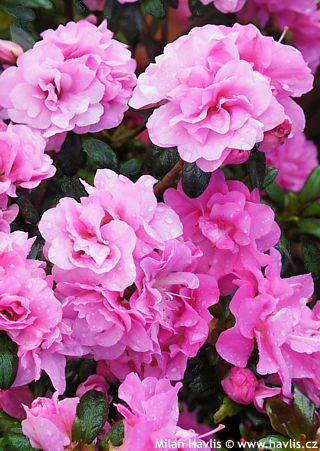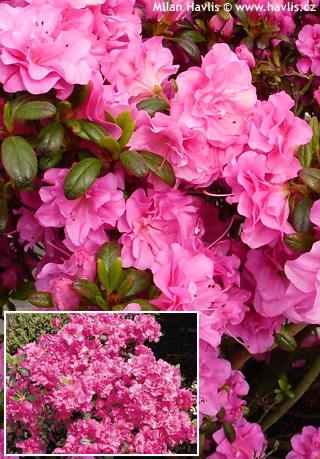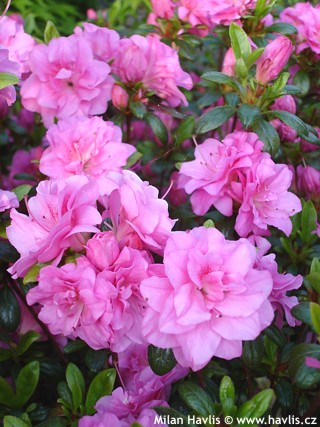Azalea japonica 'ELSIE LEE' Japanese azalea
Azalea
Japanese azaleas are very popular features of our gardens. In their home climate they grow to relatively substantial shrubs, as opposed to limited sizes in our continental, dry climate. They are very floriferous, maintenance-free shrubs that usually bloom from mid to late spring.
Elsie Lee is a fantastic Japanese azalea variety bred already in 1960. It produces large, 5-7 cm across, double flowers of pastel pink colour. They come out in profusion usually from mid May for 2-3 weeks. Evergreen leaves are small, elliptic, and glossy. It was bred by Anthony Sammarello in Ohio, USA, as a hybrid between varieties Desirée and Rosebud. Thanks to its durability and beauty it quickly became a demanded parent for further breeding, until 2000 it was used for 22 new hybrids, among which one of the most renowned rhododendron and azalea hybridizer Hans Hachmann had 8 of his very successful varieties. Elsie Lee is still a sought-after variety for ericaceous landscapes today.
Japanese azaleas can be clipped to shapes in early June. If so, do not use fertilizers enhancing growth rate. The size of new branches would get out hand and spoil the shape you are going to achieve. They need light, permeable soil that is acid, constantly moist (keep azaleas mulched at all times) and moderately fertile. Use fertilizers for rhododendrons and azaleas, or ericaceous plants. The best soil mix is 1/3 of peat, 1/3 of leaf-mould or lime-free compost, and 1/3 of soil from the hole where you are going to plant it. Azaleas have shallow roots, so do not plant them too deep. Hardy to about -27°C (USDA zone 5b).
Last update 18-05-2017

































